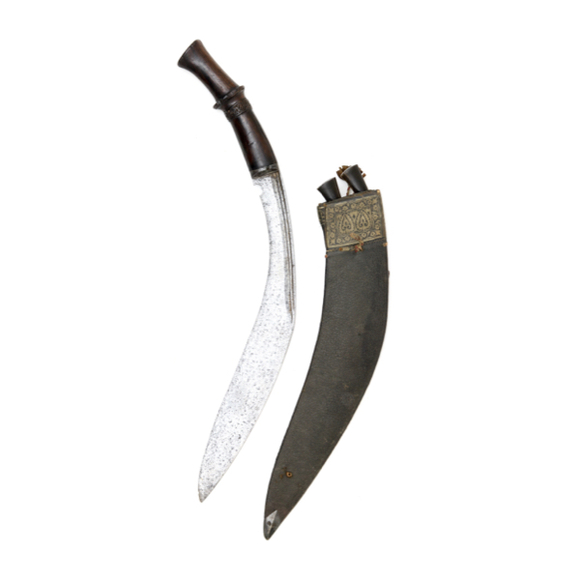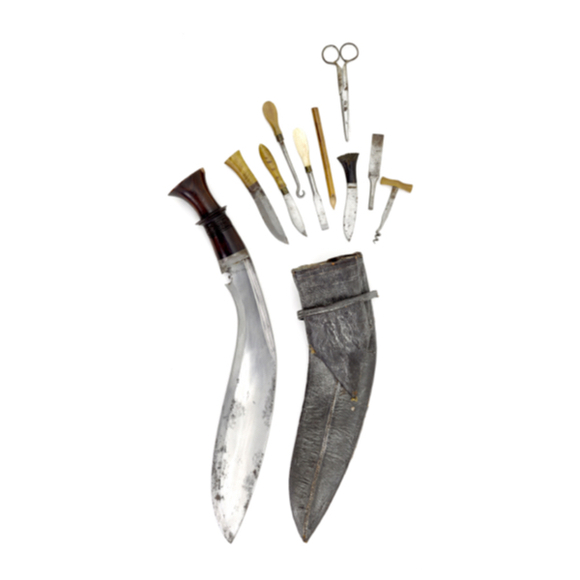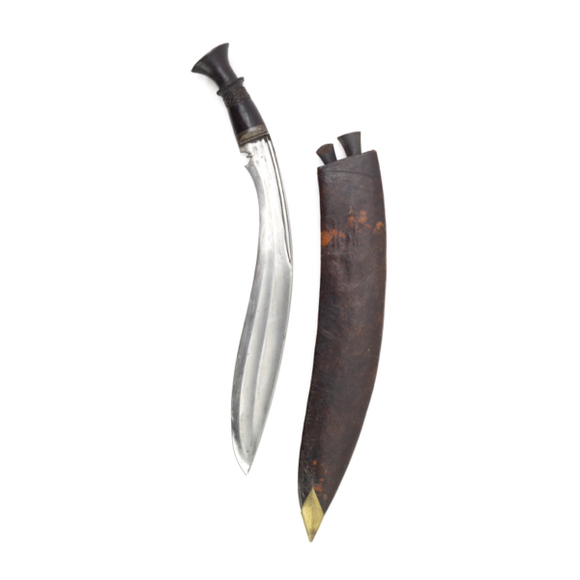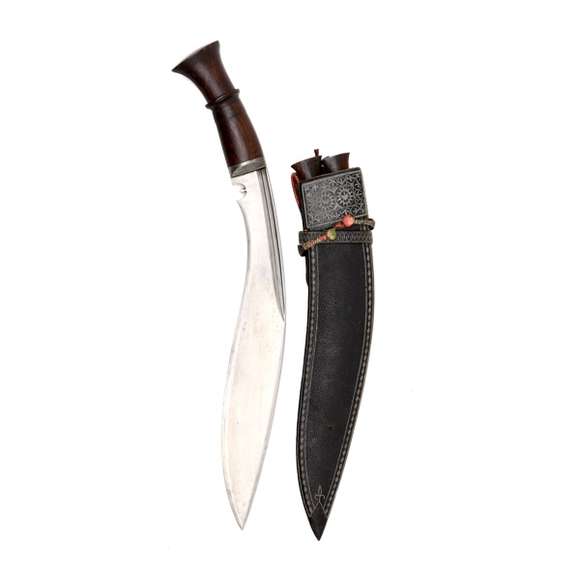With a very fine Nepalese blade, but kard-like hilt and scabbard.

Sheathed 50.3 cm
Khukurī 47.5 cm
37 cm
Base 11 mm
Shoulder 8.6 mm
5 cm from tip 5.8 mm
Narrowest 33 mm
Widest 56 mm
729 grams
10 cm from hilt
Iron, steel, gold, wood, leather
Nepal
Second half 19th century
From a Parisian collection
Description
A relatively large khukurī with high-quality du'i cirā (दुइ चिरा) blade with two wide and shallow fullers. It has an ornamental notch (kaudi) with trefoil design, often seen on higher quality officer's khukurī such as this kothimora elsewhere on this site.
The most interesting element is, however, the hilt. It appears to be Indian made, with slightly different curves and proportions than the Nepalese would have made them. It is entirely covered with fine floral koftgari work in the Punjabi style, almost certainly done in Sialkot.

The scabbard is made of wood, covered with black leather. It has an iron chape with a transverse groove in it that reminds of some Afghan sword chapes. The back pockets are, unfortunately, lost. The scabbard also has a split in the upper section.
Comparable examples
Khukurī with Indian koftgari hilts turn up from time to time, some appear to be entirely Indian made and many have a bit of a curio feel to them. Not this example, with its good Nepalese blade of strong proportions. The only direct comparable to the Sialkot-made hilt is a khukurī in an unlikely place: it belonged to King Carol I (ruled 1866-1914) and is currently held in the Peles Museum, Romania.
The piece is described in detail by V.K. Kunwar on his Sir Kukri blog of 2014.
Carol I of Romania was initially a Prussian officer who became the hero of Romania's struggle for independence. He took part in the Second Schleswig War, including the assault of the Fredericia citadel and Dybbøl, where he learned valuable lessons that would help him later on.
By 1866 he came to rule Romania as a prince under the Ottomans. In 1877 he rebelled and helped fight the Ottomans in the Russo-Turkish war of 1877-1878. A good soldier and great commander, he achieved several military victories and brought the country to independence in 1878, after which he was crowned king.
It is unclear how he obtained the khukurī; official relations between Romania and Nepal were not established until a century later. It possibly came to Europe through Ghurkas who served here in World War 1, or was simply obtained in the European art trade.
Notes
1. See, for example, one previously sold at Druout or














Early type with very shallow notch in the blade and little flare in the pommel.
20th century military khukurī with many different tools in its back pocket.
Very large presentation kukri from the Sundarijal Arsenal in Nepal.
An understated, elegant khukuri of substantial proportions with fine layered blade.






